Your chickens will need properly formulated chicken feed that is the correct type for their age, for growth, sustenance and to produce eggs if they are hens of egg laying age. There are many old wives tales and alternative views on feeding, some say it’s marketing that has created all of these feeds and hens will survive well on wheat and others will say their grandad never had layers pellets and just fed his hens kitchen scraps! Formulated poultry feeds didn’t exist until recently, primarily created thanks to commercial research on hens diets as we tried to squeeze more and more eggs out of hens.
In days gone by though when ‘grandad fed scraps’, pure breeds were kept for eggs and they were fed grain mixes or dried mash chicken feed that had meat or fish meal added to increase the protein content. Hens would free range over a large area and could also supplement their diet with what they could forage. Bugs, insects and worms are all valuable sources of protein, not forgetting a good selection of greens providing vitamins and minerals.
“Grandad’s chickens didn’t get chicken feed and survived on kitchen scraps but they could free range to top up their diet on protein, vitamins, minerals and calcium from the fields or orchards they grazed. They didn’t produce anything like the number of eggs modern hybrid hens or some pure breeds produce.”
So in short, if you don’t feed a proper formulated layers feed to your hens, they won’t be able to keep up the demands that egg-laying puts on their bodies.
Layers Feeds and Protein
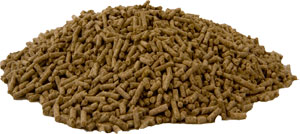 Chickens require protein to produce feathers and eggs as well as to grow. The amount of protein in their diet is important and you will see on the ingredients on the back of bags of commercial feeds the percentage of protein that they contain. It is higher in ‘Growers Pellets’ for example to enable chickens to grow and produce feathers. You will find that chickens stop laying eggs when they moult (lose their feathers and regrow new) as they are diverting protein from egg production to feather production. During the moult, you can scatter a handful of cat kibble in the run which helps them to top up with protein. Do not use dog food as most of the protein is derived from cereals.
Chickens require protein to produce feathers and eggs as well as to grow. The amount of protein in their diet is important and you will see on the ingredients on the back of bags of commercial feeds the percentage of protein that they contain. It is higher in ‘Growers Pellets’ for example to enable chickens to grow and produce feathers. You will find that chickens stop laying eggs when they moult (lose their feathers and regrow new) as they are diverting protein from egg production to feather production. During the moult, you can scatter a handful of cat kibble in the run which helps them to top up with protein. Do not use dog food as most of the protein is derived from cereals.
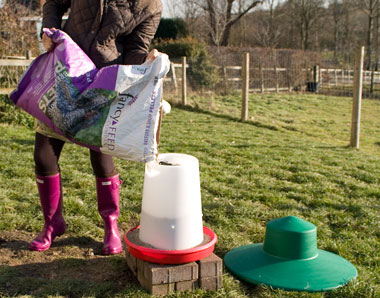
Commercial feeds contain the right balance of nutrients & can be fed ad-lib in hoppers if kept dry. This one has a rain hat.
Commercial chicken feeds have been well researched and contain the correct balance of minerals and nutriets required by chickens as well as sufficient protein and calcium which is essential for egg shell production. Layers pellets for example are around 16% protein. Wheat is about 10% protein and lacks essential vitamins that are required by chickens.
Formulated feeds come as pellets or mash and should be fed ad-lib so hens can take what they want as they need it. This type of feed must be kept dry or it will soon spoil. The feeder and rain hat shown above is the only sort I have found that really does keep the feed dry. Most have a hole in the top of the hat for a handle or for hanging and this lets water in. A feeder and rain hat similar to this one can be bought from Omlet.
Eggs are made up of around 80% protein so if there’s a shortage of protein in their diet, egg laying will be the first thing they your girls cut back on!
There is more information on the poultykeeper.com site which has a very good page of feeding chickens and chicken feed.
Mixed corn
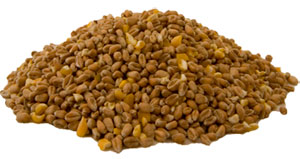 Mixed corn is usually 80 to 90% wheat and 10 to 20% maize. It is useful as a scratch feed, it keeps hens active, scratching around looking for it but should only be considered a treat. A handful per hen thrown late afternoon helps them to have a full crop overnight.
Mixed corn is usually 80 to 90% wheat and 10 to 20% maize. It is useful as a scratch feed, it keeps hens active, scratching around looking for it but should only be considered a treat. A handful per hen thrown late afternoon helps them to have a full crop overnight.
The maize (yellow in colour) is very fattening but can be useful during very cold weather to help your hens keep warm – I increase my girls’ ration of corn when it is cold over the winter, after they have finished moulting (they need lots of protein during the moult) since they are not laying eggs and need a little extra fat to burn in order to keep warm.
If you feed too much corn, your hens will get fat and fat hens don’t lay eggs!
Household scraps
Feeding household scraps is no longer allowed according toi DEFRA and can be a bit hit and miss anyway. You don’t really know what a hen is getting and the diet is very unbalanced. It is for this reason that scraps used to be mixed into a mash by using layers mash and water (which can be warm in winter). The mixture should be a sort of crumbly mix, not too wet but not too dry. Feeding scraps should be limited to at most 25% of a hens diet so as not to tip the balance too far one way or another.
Greens
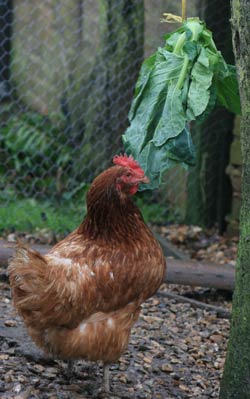 Ample green stuff should be provided for your hens. Grass cuttings, weeds and off-cuts from cabbages, cauliflowers and other greens can be provided at minimal cost. Lettuce should be fed in moderation because it has very little nutritional value (very little Protein and Energy / Calories) and avocado pear is poisonous to hens but most other greens that come from the kitchen will be appreciated by your girls. Try hanging greens in their run, just a little higher than they can reach. As they eat them, they will need to jump to get the last bits so will be getting exercise at the same time as their greens! Win-win!
Ample green stuff should be provided for your hens. Grass cuttings, weeds and off-cuts from cabbages, cauliflowers and other greens can be provided at minimal cost. Lettuce should be fed in moderation because it has very little nutritional value (very little Protein and Energy / Calories) and avocado pear is poisonous to hens but most other greens that come from the kitchen will be appreciated by your girls. Try hanging greens in their run, just a little higher than they can reach. As they eat them, they will need to jump to get the last bits so will be getting exercise at the same time as their greens! Win-win!
If you have an area in which you can grow cabbages in your garden, it may be worthwhile thinking about growing a row for the winter. Cabbages will sit there in the cold, perfectly preserved until picked. You will need to keep them covered with fleece when there are cabbage white butterflies around but don’t worry if they are a little eaten, the chooks won’t mind!
Mealworm treats
Many chicken keepers like to buy mealworms or chicken treats containing these. Chickens love these and are easily tamed by using such tasty treats, however you should keep in mind that animal by-product regulations mean that mealworms are not really allowed to be fed to poultry.

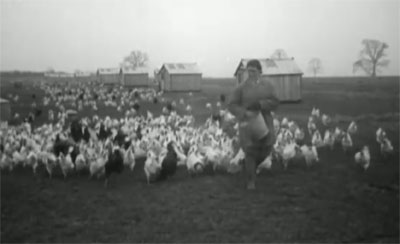

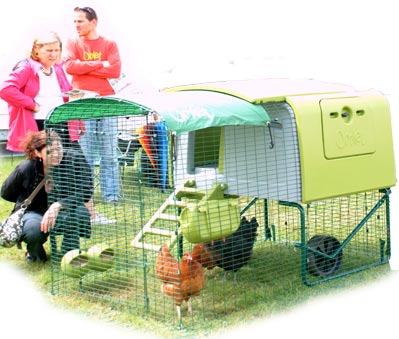


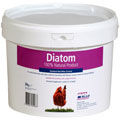
We have 40laying hens and am going to add 200 more.I want to grow and make my own feed and not buy commercial feed. I have always free range my chickens and feed them commercial laying food and a little corn.I read that flax seed is really good for them.What can I buy in grains and other things that I can mix at home ?I’m feeding my dogs and cats the eggs which is so good for them and am going to get them off commercial feed also.I fed my Grat Danes naturally in the past and they lived to be14 years old.I want to buy a 6month supply of everything I need and mix it myself.Can you help advise me.
I am sorry, this is not something I have done before. Some old text books used to give ratios of different rations that could be used but be careful that some are not banned – eg fishmeal can no longer be used. It might end up costing you more unless you can buy in bulk. For cereals, you would be best trying to buy from a local farmer – a tonne bag of wheat should cost you less direct than bagged from a supplier. You will also need storage space as well or a commercial hopper to store feed in.
I work in a brewery and can get hold of malt, can I feed my chickens with this as part of there diet, I was told that if the chickens find it to hard I can mix it with a little bit of water.
I’ve never used this sorry so can’t really comment…
First of all, can I just say , thank you so much for your website? I am a newbie and have found your site really helpful in setting up my arrangements for my chickens. I have 4 lovely brown rescue hens in a wooden coop with a small run attached and this is within a much larger run of about 3 metres by 4 metres containing a rough grassed area. It is my aim to allow them out into our garden for a few hours a day once they have got into a routine. They are lovely and we have had an egg a day since we got them a week ago, not sure who’s laying them! My question is in regards to feeding. They have a feeder that is kept in the smaller run so they can help themselves any time, they enjoy foraging when they’re out and in the late afternoon I call them in with a handful of corn mix each, which they love. After a week, they don’t appear to have eaten much of their pellets, I haven’t had to refill it at all, is this normal? I thought I’d have to top it up every other day or so!
They shouldn’t be overfed on corn as it is fattening – but a handful each per day is fine. They must be getting most of what they need whilst free ranging.
Hi there. I am getting my first two hens soon! I am a complete beginner. Here in South Africa, many people seem to make their own chicken feed. this approach appeals to me because if I made my own it could be organic and not genetically modified – something that I couldn’t be sure of with commercial feed (maize is potentially genetically modified here). Apparently there is no locally available organic commercial chicken feed and since the rest of our household is organic I think the chickens should fall in line :). If I did this, can you advise me on what proportions of what foods to give? e.g. how much leavy greens, grains, root veg…etc. Any advice much appreciated. thanks for a great site
Hi, I am not sure… I haven’t mixed my own feed before.
Some American chicken keeping books have this sort of thing in them and this might help.
Hi I am about to get 2 hens & 2 cocks to start me off, & plan to get another 2/4 hens in the next couple of months 1st can we eat the eggs if they are fertilized,& how will i know if they are? i plan to let them roam free in the day & shut them up at night but was going to make a pen to keep them in sometimes or if the cats bother them but apart from weeds there is very little grass in the area i was going to put them, after reading some of the things on your (fantastic) website im now worried about this. Can I put a layer of sand & sawdust down in the muddy part until the grass comes in & then scatter a fed for them to scratch up, on this aswell as a dish of pellets?
Firstly, you only need one cock bird. Two will usually fight so need to be kept apart.
Yes, fertile eggs are fine to eat, you won’t be able to tell the difference until they are incubated and start to develop.
Cats won’t usually bother them unless they are very small. Weeds are great, they will pick at the seed heads, eat insects around them and eat the green parts of the weeds. Grass can be replaced by green foods, including weeds…
I would use a hopper for the pellets as this will stop them from spilling them everywhere.